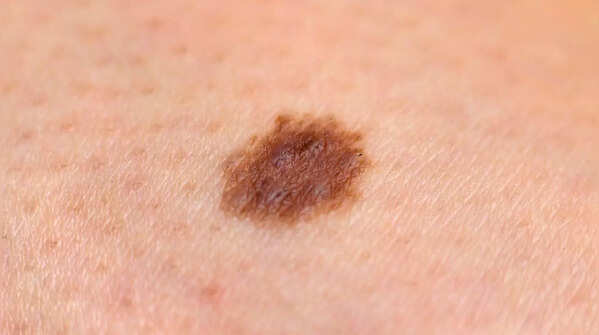Skin cancer represents one of the most prevalent cancer types globally. Its onset can be subtle, often manifesting as a seemingly innocuous new mole or a minor skin alteration, easily overlooked. However, early detection significantly enhances the treatability of skin cancer. Therefore, understanding how to identify potentially cancerous spots is crucial. From new growths and unusual moles to persistent sores, prompt recognition is key to effective intervention. Here are expert-recommended strategies to assist you in identifying early indicators of skin cancer and determining when to seek medical advice.

The ABCDE method is a valuable tool for detecting melanoma, a serious form of skin cancer. Each letter represents a characteristic to watch for:
Any mole exhibiting these signs warrants serious consideration. Consult a dermatologist for evaluation.

Do you have skin sores or scabs that repeatedly heal and reappear, or persist without healing? This could indicate early-stage basal or squamous cell carcinoma. These sores often present as pink, red, or slightly scaly patches and may bleed or ooze. A sore lasting more than three weeks or recurring in the same location should not be ignored. Persistent wounds, particularly on the face, arms, or scalp, require medical examination, as they can be subtle indicators of skin cancer.

Moles are typically painless and stable. However, a mole that begins to itch, becomes tender, bleeds, or develops a crust could signal skin cancer and requires careful attention. These symptoms often point to inflammation or structural changes in the skin, potentially indicating a more serious condition than a normal mole. If you observe such changes, seeking advice from a skin specialist is advisable.

Skin cancers don’t always arise from pre-existing moles. They can also develop as new growths, such as a small lump, a shiny bump, or rough patches, particularly on sun-exposed areas. If you detect any unusual formations on your skin, consult a skin specialist promptly.

If the color of a mole starts to shift or spread into the surrounding skin, or if the edges become indistinct, it could be a sign of melanoma. This type of irregular pigment dispersion suggests that the mole may be expanding deeper or wider, which is a serious concern. Regularly compare your moles over time and take photos if necessary to help detect changes that could indicate skin cancer. If you notice anything unusual, consult a dermatologist for evaluation as soon as possible.

Newer articles
Older articles
 Evil Eye Amulet: Protective Charm or Portal to Dark Forces? A Cultural Debate
Evil Eye Amulet: Protective Charm or Portal to Dark Forces? A Cultural Debate
 Jayden Seales Fined by ICC for Provocative Gesture During Australia Test Match
Jayden Seales Fined by ICC for Provocative Gesture During Australia Test Match
 Paralympic Archer Sheetal Devi's Viral Video Shows Her Driving Car with Feet, Defying Expectations
Paralympic Archer Sheetal Devi's Viral Video Shows Her Driving Car with Feet, Defying Expectations
 Broad Slams India's Team Selection After Headingley Test Loss, Calls for Roster Tweaks at Edgbaston
Broad Slams India's Team Selection After Headingley Test Loss, Calls for Roster Tweaks at Edgbaston
 Umpire Controversy Erupts: West Indies Coach Sammy Questions Holdstock's Consistency in Barbados Test
Umpire Controversy Erupts: West Indies Coach Sammy Questions Holdstock's Consistency in Barbados Test
 Sachin Tendulkar: 1983 World Cup Win Sparked My Cricket Dream at Age 10
Sachin Tendulkar: 1983 World Cup Win Sparked My Cricket Dream at Age 10
 Jaiswal's Fielding Woes: Ex-India Star Kaif Points to Potential Cause for Dropped Catches in England Test
Jaiswal's Fielding Woes: Ex-India Star Kaif Points to Potential Cause for Dropped Catches in England Test
 Team India's England Tour: Rahul's Sleep Strategy, Coaching Rituals, and Coffee Culture Revealed
Team India's England Tour: Rahul's Sleep Strategy, Coaching Rituals, and Coffee Culture Revealed
 Suryakumar Yadav Successfully Completes Sports Hernia Surgery, Eyes Return to Cricket
Suryakumar Yadav Successfully Completes Sports Hernia Surgery, Eyes Return to Cricket
 Gujarat Cricket Set to Launch T20 League in 2025-26 Season
Gujarat Cricket Set to Launch T20 League in 2025-26 Season